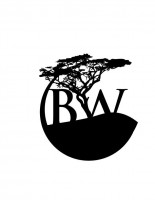It’s been a fortunate few days. We arrived in Kinshasa on Monday, exhausted from 36 hours of transit, and found the Congo just as hot as we left it two years ago. On Tuesday morning, we met with Dr. Teresa Hart, a 30-year veteran of conservation in the Democratic Republic of Congo (DRC). Teresa first came to the country as a Peace Corp volunteer in 1974. She’s now in her tenth year studying bonobos, an ape found only in the DRC, in a 25,000-square mile block of forest known as TL2. The region is an elephant sanctuary on paper, but animals are disappearing there faster than ever.
“Research here leads to advocacy because it’s all being destroyed,” says Hart.
To that end, she brought bad news. TL2, one of the four conservation areas we hoped to sample, has come under threat of a notoriously violent poacher and rapist: Colonel Toms. A decade earlier, Toms was sentenced to 20 years in a maximum-security prison for crimes against humanity. He recently escaped and restarted his poaching operations in TL2. MONUC, the UN’s DRC-specific security force, has made a commitment to apprehend the Colonel, but no action has been taken yet. It’s like the Wild West. Stability means a calm between warring bandits and rebel groups.
“In many cases, elephant are poached for their meat. Their ivory is sold to buy weapons,” says Hart.
She had come to Kinshasa from her home in Kisangani, in part to speak with the Administrative General of the ICCN–the DRC’s equivalent of a wildlife management agency. She wanted to garner support from the government to get Colonel Toms re-arrested. She also had work to do to officialize TL2’s designation as a National Park. Depending on when President Kabila signs the proposition into law, it may happen as soon as this year. Lucky for us, we needed Cosma Wilungula Balongelwa’s approval to make the Elephant Ivory Project a success, and Teresa’s French is better than ours.
With Balongelwa’s blessing, we’re heading some 500 miles up the Congo River to Kisangani tomorrow morning. Teresa and her husband John, a researcher in Kisangani for three decades, will decide if the bandit situation is safe enough for Andy and I to go via motorbike 225 miles south to TL2. If it isn’t, we’ll head north to Maiko National Park, another un-sampled area. For Dr. Samual Wasser, the director of the University of Washington’s Center for Conservation Biology and the reason we’re here, TL2 may be the most important of the remaining un-sampled regions in the DRC.
Wasser has scat samples from elephants across most of Africa and, in the regions he doesn’t, he’s able to estimate the genetics of un-sampled populations by using a technique known as genetic smoothing. The technique’s success depends upon the distribution of populations that Wasser has reference samples from. Elephants that live close together share more genes.
“I have samples from elephants in Salongo National Park in western DRC and Virunga National Park in the east,” says Wasser. The parks are 600 miles apart. TL2 sits right between them. “If I can get samples from TL2, I can estimate with much greater accuracy the genetics of elephants all across the DRC.”
This could, then, help to reduce poaching. If Teresa and John decide it’s safe enough to head into the bush, we’ll spend three weeks in TL2 collecting 30 samples for 30 different elephant groups. We’re boarding a plane for Kisangani this morning and will let you know if we’re going in as soon as we find out. Huge thanks to the Center for Conservation Biology, the Lukuru Foundation, and the Harts. As always, follow our progress on the Spot Messenger Map at the Elephant Ivory Project and our tweets at @EPfilmsTV and @amaser. See more of Skip Brown’s work here.
–Kyle Dickman and Trip Jennings
Click here to learn more about Bush Warriors’ new feature, “Live from the Congo: Elephant Ivory Project”! Or here to see previous updates from the Elephant Ivory Project team!
Project Sponsors:
How can YOU help elephants? Click here to find out!
Or consider buckling up for Chad’s elephants by purchasing a Bush Warriors elephant belt buckle, here!
![]()












Pingback: Live From the Congo: Will A ‘Notoriously Violent’ Poacher and Rapist Hamper Elephant Ivory Project’s Efforts to Stop Poaching? « Bush Warriors | Asian Elephants Today
Take the “notoriously violet poacher” OUT…That’s what he seems to be doing to these precious animals. Please catch this evil “person” and punish him severely…
That caption on the picture “Market in Kinshasa” is totally wrong. Those are just street vendors, there’s no market on that street.